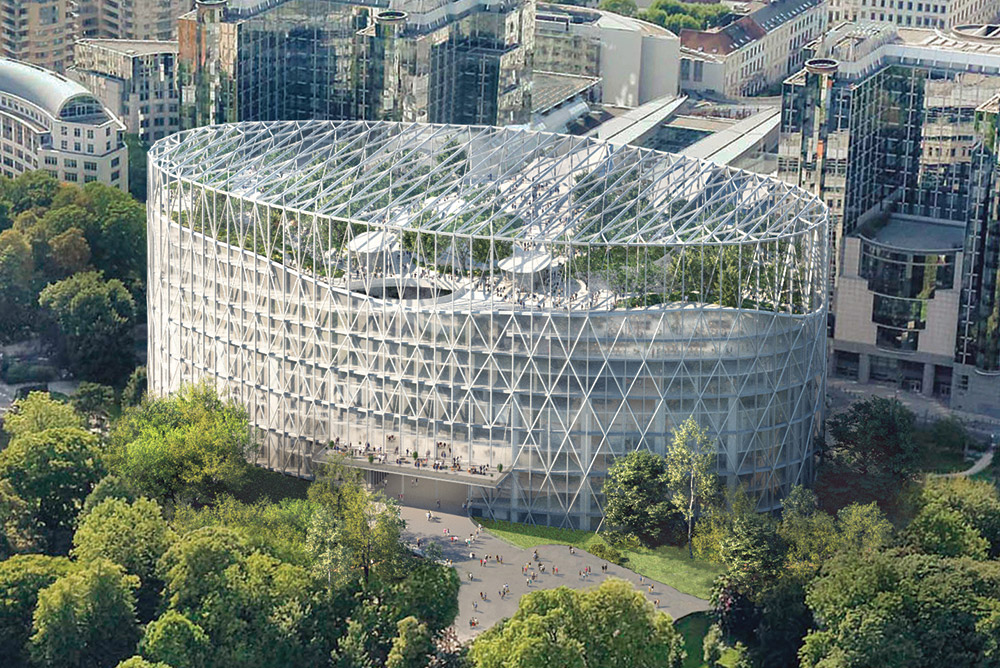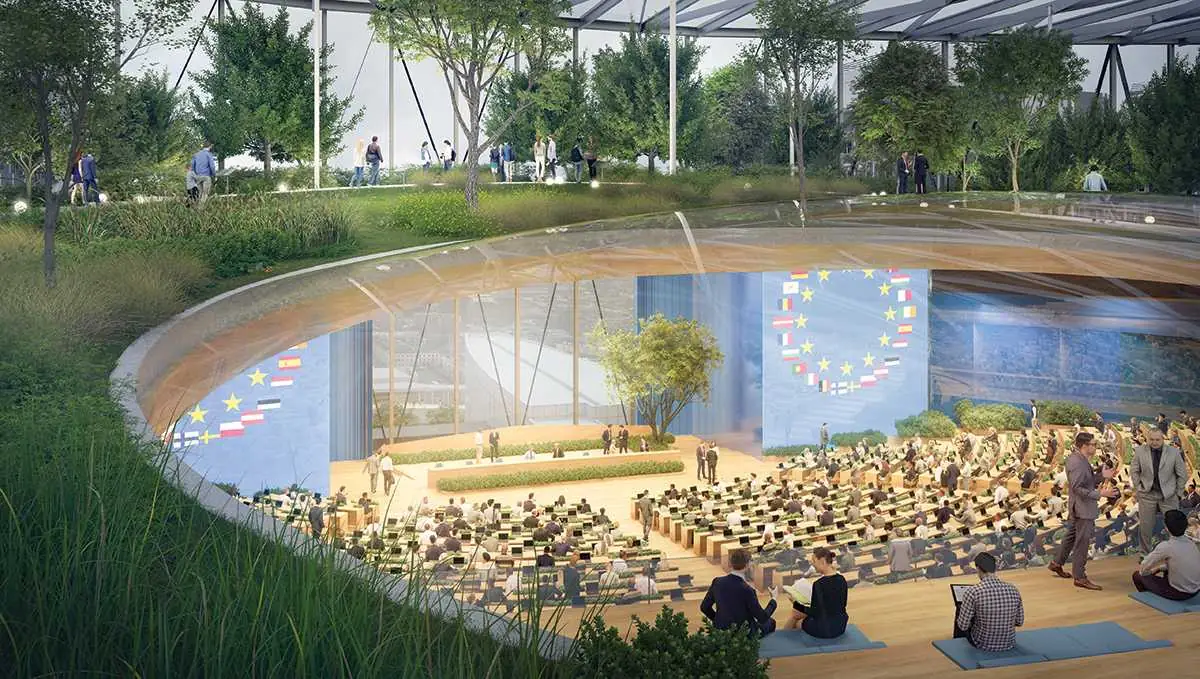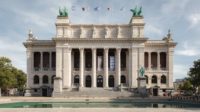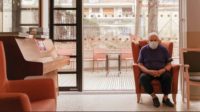“This is a building people might know from the inside but generally don’t know from the outside,” says architect Antón García-Abril about the European Parliament in Brussels. He and his Madrid-based firm, Ensamble Studio, are part of EUROPARC, a five-office, pan-European collective that recently won a competition to overhaul the parliament, whose debating chamber, housed in what is officially known as the Paul-Henri Spaak Building (PHS), regularly features in TV news reports—as when Ukrainian president Volodymyr Zelensky addressed all 705 European Parliament Members (MEPs) there last month.
Completed in 1993 by Belgian architect Michel Boucquillon, and named after a former Belgian prime minister and father of the EU, the imposing oval structure is the centerpiece of a vast complex known as the Espace Léopold, built for the European Parliament in various stages between 1989 and 2008. Located in the greenery of the Parc Léopold, but entered on the other side, via the Place du Luxembourg, the 904,000-square-foot PHS also houses extensive press facilities and the offices of the parliament’s president.

1
A competition winning design by the collective EUROPARC (1 and top of page) maintains the structure of the EU’s Paul-Henri Spaak Building (2), updating it with a diaphanous skin and “green agora” on the roof (3), where a glass dome will provide views of the debating chamber. Images © EUROPARC (1 & 3), European Union (2), click to enlarge.

2

3
Just 26 when he won the 1988 competition, Boucquillon dialed up the PoMo bombast, cladding the PHS in stone and blue glass and crowning it with a rather gratuitous arched glass atrium, clearly inspired by the Crystal Palace and Lloyd’s of London. A mere 30 years later, the Caprice des Dieux, as the PHS is humorously called (a reference to both the well-known French cheese, sold in an oval box, and the building’s perceived megalomania), is prematurely aged: dowdy, leaking, and inefficient to run, it no longer meets security requirements and was even temporarily closed in 2012, after cracks were detected in the beams spanning the debating chamber.
“As an architecture student, I hated the building,” laughs Brussels-born, Copenhagen-based Julien De Smedt, on whose initiative EUROPARC came together. Besides his firm (JDS Architects) and Ensamble, the collective comprises French office Coldefy, Dutch studio NL Architects, and the Italian Carlo Ratti Associati. “I wanted to address the issue of European democracy by putting together a team with varied cultural backgrounds that could reflect the EU’s motto, ‘United in Diversity,’ ” explains De Smedt. Among the 15 shortlisted teams, EUROPARC beat Shigeru Ban Architects, KAAN Architecten, OMA, Renzo Piano Building Workshop, and Snøhetta.
Held in 2020–21, in two stages, the competition left it open as to whether demolition or renovation was the better option. “We carried out an embedded-carbon analysis, which revealed that most of it is in the building’s concrete slabs,” explains García-Abril. “So our strategy was, ‘Let’s maintain the majority of the structure, but add a new envelope that allows for the 215,000 square feet of extra program required by the brief, and reorganize the rest of building along more efficient lines.’ ”
“Ours was one of the only schemes to preserve so much of the PHS,” adds De Smedt. “It seems crazy that in current times they even offered the possibility not to do that.” Besides its performance failures, “the PHS is badly planned, with a lot of corridors and spaces without natural light. It’s unpleasant to work in. Our scheme does a lot of reshuffling to create a far more attractive environment.”
In addition to improved functionality and performance, the competition also called for a “strong visual identity” that would “resonate with European citizens as a representation of the power of their voice.” EUROPARC chose the metaphor of transparency, cladding their scheme in diaphanous glass and adding at its summit an enormous “Green Agora,” a publicly accessible winter garden that, they say, will “bring together vegetation indigenous to all the member states, to form a multifaceted European ecosystem.” Relocated just below the Agora, the new and larger debating chamber will be visible through a shallow glass dome, allowing visitors to watch democracy at work, as at the Reichstag in Berlin.
“We didn’t look for a big gesture or some kind of flashy outcome,” says De Smedt. “It’s quite a sober scheme in many ways, which I think is right. It contains complexity, but doesn’t brag about it.” At present, no budget or timeline has been announced, but unofficial estimates put the work at around $500 million, and De Smedt is confident the project will move forward soon.
There remains the longstanding controversy over Strasbourg, the European Parliament’s official home, even though MEPs sit there just one week a month, spending the other three in Brussels, where most EU institutions are located. Indeed, when first built, the PHS was officially billed as a “conference center” and became the parliament’s most-used seat rather by stealth. Might its revamp be the catalyst for finally ending this expensive and unnecessary to-ing and fro-ing?






Post a comment to this article
Report Abusive Comment